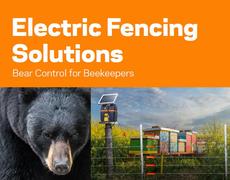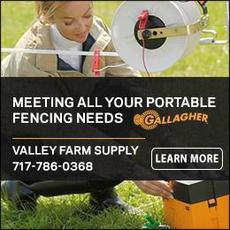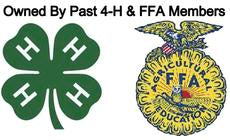Weighing in on a Better Beef Product
Like all beef lovers, Rob Hess wants to enjoy restaurant-quality steaks whether he’s grilling a Ribeye at
home on his farm, or eating at his favorite steakhouse. “Being off on our weights can create management
issues that may be difficult to fix “
Hess’ family-owned business, Bow Creek Farm
& Cattle Co., is located less than two miles north
of the tourist destination of Hershey, Pennsylvania.
Hess and his wife, Amy, pride themselves
on producing superior cattle with a focus on
improving the genetics of their registered Red
Angus herd.
What Hess didn’t realize through his work in advancing
his herd’s genetics, is he was ultimately
creating restaurant-quality beef which would
soon become featured on menus in the popular
tourist town.
Creating restaurant-quality beef “Getting in
to the beef industry wasn’t my initial intention
when I started focusing on genetics three years
ago,” says Hess. “I was doing more embryo and
AI work to improve the overall EPDs of my herd.
Red Angus isn’t as popular as other breeds here
in the Northeast, and my intention was to focus
on developing high-quality seedstock animals
and grow the business based on supplying the
region with our top notch Red Angus cattle.”
However, the results of the genetic tests told
a different story. What Hess discovered was
his cattle ranked highest in both docility and
tenderness traits – creating a perfect genetic
combination to grow a successful herd based on
strong breeding and carcass traits. He then had
the data to prove his meat was not only age and
source verified, but also genetically verified.
Hess didn’t have to look far when it came time to
secure a buyer for his beef.
“This area is known for connecting farmers to
consumers,” Hess explains. “I took samples of my
beef to a resort destination a couple miles from
my farm and they loved it. We’ve been partners
ever since.”
Hess attributes part of his success to the quality
and dependable products he utilizes on the
farm daily. He says he relies on a Gallagher scale
for all of his weighing needs.
“I’ve been utilizing a Gallagher weigh scale for
almost six years and use the scale for the birth,
weaning and live weights on every animal on
the farm,” says Hess. “I’ve never had an issue
with the scale, which is why I use and trust the
exceptional quality of all Gallagher products.”
Accuracy is paramount when it comes to
tracking and analyzing livestock weights. Hess
explains that keeping detailed and accurate
herd data is incredibly important to his overall
operation and business practice.
We track and compare the live and hanging
weight for each animal that we harvest, and
based on those percentages, we are able to
make selection decisions for the future, says
Hess. We do the same process with yield grade
as well – we compile the data for yield grade,
and also use that information to make farm
management decisions based on the results we
collect.
“Being off on our weights can create management
issues that may be difficult to fix,” says
Hess. “Many farm decisions are based on the
animal’s weight and being off on our data can
potentially result in money out of our pocket.
The decisions we make based on the weights
have a significant impact on the future of our
herd and ultimately the success of our business.”
Gallagher Sales Representative Greg Miller
agrees.
“Accuracy is paramount when it comes to tracking
and analyzing livestock weights,” says Miller.
“Our weigh scales provide rapid, automatic and
accurate weight capture – suitable in any farm
or ranch setting and regardless of the animal’s
movement.”
Gallagher weigh scales were designed with
the producer in mind, explains Miller. “All of our
scales are ranch and farm ready, built tough and
durable, feature easy-to-use components, and
suited for all weather conditions.”
Hess explains his animals are performance tested
from pasture to the plate. “I have no room for
error when making decisions that will impact the
makeup of my registered herd or my business,”
he says.
“I have never been disappointed in a product
that I’ve purchased from Gallagher, or had a
Gallagher product fail on me,” says Hess. “If
Gallagher sells it, I want to buy it because they
are known for their quality, durability and the
company stands by the products they sell.”
While Hess admits that it may not have been his
intention to develop a high-quality beef product
from the beginning, he is glad he solved one
dilemma. “Now I can truly enjoy restaurant-style
steaks at home and down the road at my favorite
restaurant,” he says.
Learn more about Bow Creek Farm & Cattle at
www.bowcreekfarm.com.









